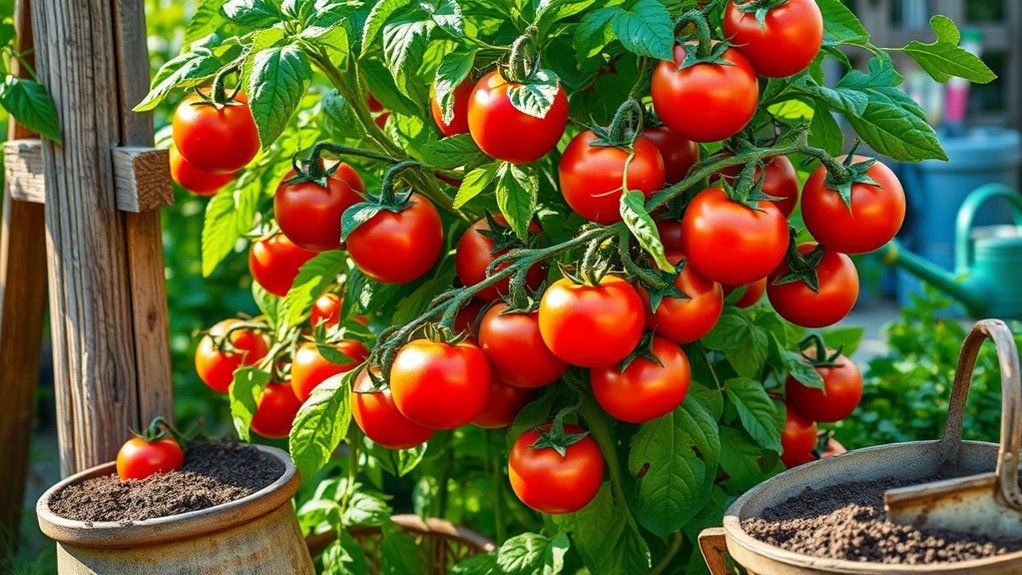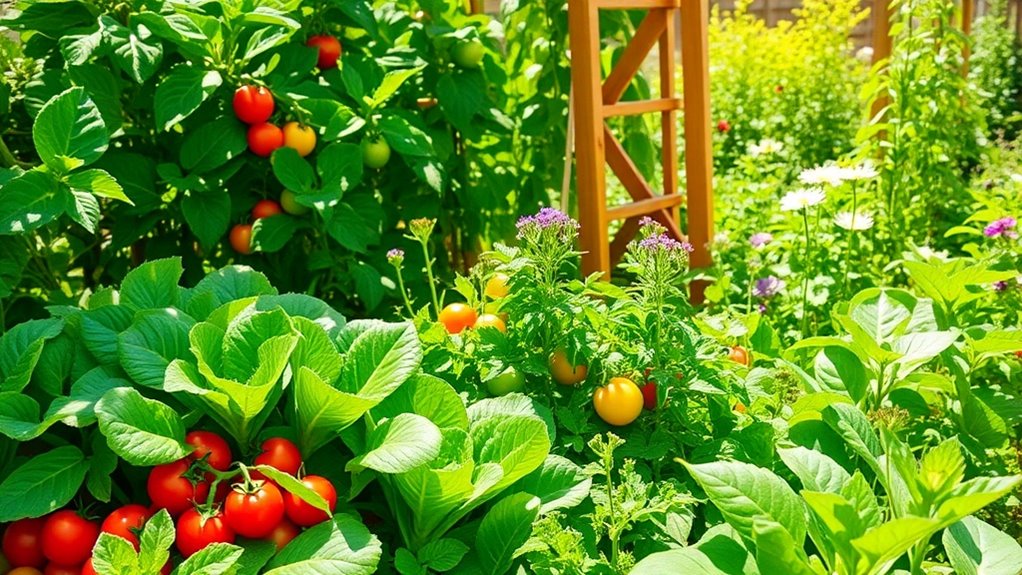A Beginner’s Guide to Growing Your Own Fresh Tomatoes
Growing your own fresh tomatoes can be incredibly satisfying, yet it’s often met with challenges. You’ll want to start by selecting the right varieties that suit your climate and available space. Proper soil preparation is key to ensuring strong growth and a fruitful yield. As you consider the next steps, understanding essential maintenance and pest management will prove crucial for success in your gardening endeavor. Would you like to explore how to navigate these aspects effectively?
Selecting Tomato Varieties
When embarking on your journey to grow fresh tomatoes, selecting the right varieties is crucial to ensuring a bountiful harvest.
For beginner tomato growing, consider factors like climate, disease resistance, and growth habits.
Opt for determinate varieties if space is limited, while indeterminate types offer continuous harvest.
Look for heirloom tomatoes for unique flavors, or hybrid varieties for higher yields and resilience.
Additionally, understanding growing conditions can greatly influence the overall success of your tomato plants.
Preparing the Soil
Preparing the soil is a vital step in successfully growing tomatoes, as it directly affects the health and yield of your plants.
Begin by testing the soil pH; ideally, it should be between 6.0 and 6.8. Amend with compost or well-rotted manure to enhance fertility and drainage.
Tilling the soil to a depth of at least 12 inches improves aeration and root penetration. Additionally, be aware of signs of struggling garden soil that can indicate underlying issues affecting plant growth.
Planting Your Tomatoes
Once you’ve prepared the soil, it’s time to plant your tomatoes, ensuring they get the best start possible.
Dig holes 24 to 36 inches apart, deep enough to bury two-thirds of the stem.
Carefully remove each plant from its container, avoiding root damage.
Position them upright and fill the holes with soil, gently pressing to eliminate air pockets.
Water immediately after planting. Additionally, soil preparation can greatly influence the flavor and health of your tomatoes, so be sure to use nutrient-rich compost in your planting mix.
Watering and Maintenance
With your tomatoes securely planted, the next step involves meticulous watering and maintenance to promote healthy growth.
Ensure you:
- Water consistently, providing 1-2 inches weekly, adjusting for rainfall.
- Use mulch to retain soil moisture and regulate temperature.
- Fertilize every 4-6 weeks with a balanced fertilizer to support nutrient uptake.
To optimize your watering strategy, consider factors like ideal watering frequency which can significantly impact plant health.
Following these practices will foster strong, thriving tomato plants.
Managing Pests and Diseases
While nurturing your tomato plants, you’ll inevitably encounter pests and diseases that can threaten their health.
Monitor for signs, such as discoloration or holes in leaves. Use neem oil for insects like aphids and implement companion planting to deter pests. Additionally, consider planting basil and marigolds alongside your tomatoes, as these companions can greatly enhance growth and deter harmful insects. For fungal issues, ensure proper air circulation and apply fungicides when necessary.
Regularly inspect your plants to catch problems early and maintain vigor.





